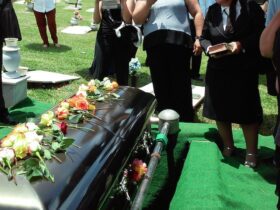How to Treat Sudden Cardiac Arrest
Sudden cardiac arrest is a serious and life-threatening condition that requires immediate attention and action. Whether you’re at home, at work, or in a public setting, knowing how to respond to a sudden cardiac arrest can make a significant difference in saving someone’s life. In this blog post, we’ll explore the importance of understanding and treating sudden cardiac arrest, along with practical tips for responding effectively. Let’s dive in!
Understanding Sudden Cardiac Arrest
Sudden cardiac arrest occurs when the heart’s electrical system malfunctions, causing the heart to suddenly stop beating. This disruption in the heart’s rhythm prevents blood from being pumped to the rest of the body, leading to a loss of consciousness and, ultimately, death if not treated promptly. It’s important to note that sudden cardiac arrest is different from a heart attack, which is caused by a blockage in the blood supply to the heart.
Surprising Statistics
Did you know that approximately 356,000 out-of-hospital cardiac arrests occur in the United States each year? Even more staggering is the fact that about 90% of people who experience sudden cardiac arrest outside of a hospital setting do not survive. However, when immediate CPR is performed and an automated external defibrillator (AED) is used, the survival rate can double or even triple.
Responding to Sudden Cardiac Arrest
When someone experiences sudden cardiac arrest, every second counts. Here’s how you can respond effectively to the situation:
Call for Help
The first and most critical step is to call for emergency medical services (EMS) by dialing your local emergency number. If you’re not alone, direct someone to call for help while you initiate the next steps.
Perform CPR
If the person is unresponsive and not breathing normally, start CPR immediately. Push hard and fast in the center of the chest at a rate of 100 to 120 compressions per minute. If you’re unsure about how to perform CPR, the emergency dispatcher can provide guidance over the phone until help arrives.
Use an Automated External Defibrillator (AED)
If an AED is available, use it as soon as possible. These portable devices can analyze the heart’s rhythm and deliver a shock if necessary. Most AEDs provide simple audio and visual instructions, making them easy to use even for individuals with minimal training.
How to Apply in Daily Life
Knowing how to respond to sudden cardiac arrest is not just valuable in emergencies—it’s a skill that can be applied in your daily life. Consider taking a CPR and AED certification course to equip yourself with the knowledge and confidence to act in a crisis. Additionally, familiarize yourself with the location of AEDs in your community, workplace, and other frequented areas.
Incorporating this life-saving knowledge into your daily routine not only prepares you to assist others in need but also instills a sense of empowerment and readiness to handle unexpected emergencies.
Conclusion
In conclusion, being prepared to respond to sudden cardiac arrest can truly make a life-saving difference. By understanding the importance of quick action, performing CPR, and utilizing AEDs, you can play a critical role in improving the outcomes of those experiencing cardiac emergencies. Remember, staying informed and proactive in acquiring life-saving skills can empower you to make a positive impact in your community and beyond. Together, we can create a safer and more prepared environment for everyone.
















